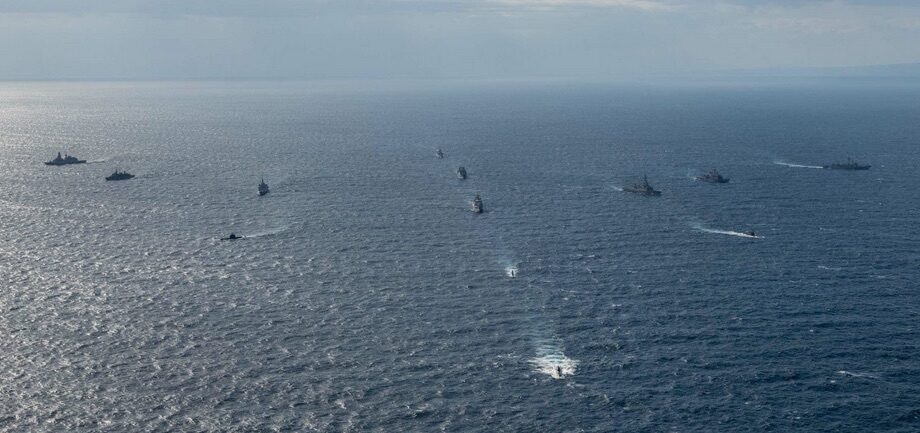Kort efter øvelsen gik Charles de Gaulle hangarskibet til Den Persiske Golf. Italien, der deltog i Dynamic Manta med skibe og ubåde, var hele øvelsen 'værtsnation': Italien stillede havnen i Catania (Sicilien) og flådens helikopterstation (også i Catania) til rådighed for de deltagende styrker, Sigonella-luften station (den største amerikanske / NATO-base i Middelhavet) og Augusta (begge på Sicilien) logistikbasen for forsyninger. Formålet med øvelsen var jagten på russiske ubåde i Middelhavet, der ifølge NATO ville true Europa.
At the same time, the Eisenhower aircraft carrier and its battle group are carrying out operations in the Atlantic to "demonstrate continued US military support for allies and a commitment to keep the seas free and open." These operations - conducted by the Sixth Fleet, whose command is in Naples and base is in Gaeta - fall within the strategy set out in particular by Admiral Foggo, formerly head of the NATO Command in Naples: accusing Russia of wanting to sink with its submarines the ships connecting the two sides of the Atlantic, so as to isolate Europe from the USA. He argued that NATO must prepare for the "Fourth Battle of the Atlantic," after those of the two World Wars and the cold war. While naval exercises are underway, strategic B-1 bombers, transferred from Texas to Norway, are carrying out "missions" close to Russian territory, together with Norwegian F-35 fighters, to "demonstrate the readiness and capability of the United States in supporting the allies.
Comment: So there are still some anti-Russia cold warriors in Italy too. We wonder how much they're getting paid to spout such tripe.
Military operations in Europe and adjacent seas take place under the command of US Air Force General Tod Wolters, who heads the US European Command and at the same time NATO, with the position of Supreme Allied Commander in Europe, this position is always covered by a US General.
All these military operations are officially motivated as "Europe defense from Russian aggression," overturning the reality: NATO expanded into Europe with its forces and even nuclear bases close to Russia. At the European Council on February 26, NATO Secretary-General Stoltenberg declared that "the threats we faced before the pandemic are still there," placing first "Russia's aggressive actions" and, in the background, a threatening "rise of China." He then stressed the need to strengthen the transatlantic link between the United States and Europe, as the new Biden administration strongly wants, taking cooperation between the EU and NATO to a higher level. Over 90% of the European Union's inhabitants, he recalled, now live in NATO countries (including 21 of the 27 EU countries). The European Council reaffirmed "the commitment to cooperate closely with NATO and the new Biden administration for security and defense, "making the EU militarily stronger. As Prime Minister Mario Draghi pointed out in his speech, this strengthening must take place within a complementarity framework with NATO and in coordination with the USA.
Therefore, the military strengthening of the EU must be complementary to that of NATO, in turn, complementary to the US strategy. This strategy actually consists in provoking growing tensions with Russia in Europe, so as to increase US influence in the European Union itself. An increasingly dangerous and expensive game, because it pushes Russia to militarily strengthen itself. This is confirmed by the fact that in 2020, in full crisis, Italian military spending stepped from 13th to the 12th worldwide place, overtaking the place of Australia.
This article was originally published in Italian on Il Manifesto.




Kommentar: As the above demonstrates - and suggests going forward - we can quite probably look forward to more belligerent rhetoric and aggressive provocations against Russa from Biden-bolstered NATO and its war-mongering flunkies in Europe. And if they continue in this vein, it will not end well.
See also: